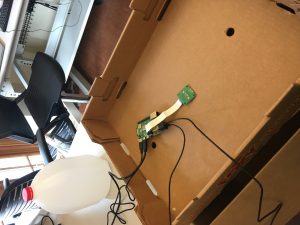This week has mostly been integration week, which has been overall successful. Highlights include:
- Full integration of web app with hardware device
- Fully working communication between RPI and web app
- Support for users identifying images/adding new Iconic classes, based on cropped images sent from RPI && support for arbitrary categories
- Slight improvements on the CV side
- Can now take a list of expected items from the web app, and filter looking for only the expected items to improve accuracy (when item is removed)
- Now accepts arbitrary additional iconic images to be compatible with user registration on Web app side
- Web app/CV now supports custom registered items (fully integrated with previous debugging-stage custom items): users can now identify their custom items using the viewfinder on the webapp.
- Several UI/CSS enhancements
Overall, I think we’re in a pretty good position. We have almost everything essential for the project finished, and we have about a week left to perform the needed testing and create the slideshow. The main concern is finalizing the AJAX for the current recipe listings, and possibly needing to eke out some extra performance on the CV side to meet our criteria. To that end, we’ve decided to shuffle around some responsibilities so that Jay can focus on AJAX (see Jay’s report). There are also some remaining less essential issues, including RPI online/offline indicators, CSS, and website UI enhancements.




